The liquid cooling system, with its 120-mm aluminum radiator and 4th generation integrated pump and copper plate, will minimize overheating and even provide considerable overclocking leeway. The Intel Core i7-9700K processing unit will handle juggling CPU-demanding games (like MMOs) and multiple system-intensive apps.
The Wi-Fi module doesn't have the best range.
The CyberpowerPC Supreme comes fitted with the best hardware that you can buy today without going overboard. This machine is among the best gaming PCs around $1,500 and will have no issues running AAA games at ultra settings producing high (above 60-70) frame rates at 1440p years from now.
Intel Core i7-9700K (Octa-core, up to 4.9 GHz)
Z390 chipset
GeForce RTX 2070 Super, 8GB
16GB DDR4
1TB SSD
800 watts
Case with tempered glass side panel, RGB lighting, Gaming keyboard and mouse included, Windows 10 installed
Liquid cooling + airflow fans
1 year
Some find the included keyboard lacking.
The SkyTech Siege Mini will allow you to purchase and install games without even looking at the system requirements. This is the PC that will be able to run even the most poorly optimized games at 1440p@60 fps. With 1TB SSD, every game will be loading within seconds.
AMD Ryzen 7 2700X (Octa-core, up to 4.3 GHz)
B450M chipset
GeForce RTX 2070 Super, 8GB
16GB DDR4
1TB SSD
600 watts
Case with tempered glass side panel, RGB lighting, Gaming keyboard and mouse included, Windows 10 installed
Airflow fans
1 year
The Wi-Fi module supports the latest 802.11ac standard. The four fans that are equipped with RGB lighting are easily addressable and can be configured individually. The system supports multi-monitor setups and is fitted with four DIMM slots so you can expand the machine's RAM to 64GB.
The fans are not quiet.
The iBUYPOWER Element 9260 is not packing anything that's not conducive towards the most comfortable gaming experience. Nevertheless, the machine's well-rounded and pretty flexible, good enough to enable streaming, video editing, and more without any third-party assistance.
Intel Core i7-9700F (Octa-core, up to 4.7 GHz)
B365 chipset
GeForce GTX 1660 Ti, 6GB
16GB DDR4
240GB SSD + 1TB HDD
500 watts
Case with tempered glass side panel, RGB lighting, Gaming keyboard and mouse included, Windows 10 installed
Airflow fans
1 year
The case comes adopting nine USB ports, with seven 3.0 and only 2.0 ports enabling the fastest data throughput. The RGB lighting is noticeable but not too flashy, enough to attract attention but without making the case look like a Christmas tree. In addition to Wi-Fi, the machine's also equipped with a Bluetooth module.
The build could use an HDD to complement the 500GB SSD.
Want to play modern games with awesome graphics but do not wish to pay through the nose? The SkyTech Archangel is the gaming PC you cannot afford to miss. This machine is good enough to run the latest titles without noticeable stuttering and without switching to medium graphics settings.
AMD Ryzen 5 2600 (Hexa-core, up to 3.9 GHz)
B450M chipset
GeForce GTX 1660, 6 GB
16GB DDR4
500GB SSD
500 watts
Case with tempered glass side panel, RGB lighting, Gaming keyboard and mouse included, Windows 10 installed
Airflow fans
1 year
The tempered glass side panel is easy to remove when you want to clean the components from dust. The 240GB SSD is enough to hold the system and the games that you play the most, booting Windows within seconds and taking the same ~4-5 seconds to start any game.
There's only 8 gigabytes of RAM.
The CyberpowerPC Gamer Xtreme is not the most powerful machine on this list yet its hardware will be enough to comfortably play popular multiplayer games like League of Legends, Fortnite, Overwatch, and more at the highest graphics settings with more fps than necessary and even run graphically-impressive single-player games at 1080p.
Intel Core i5-9400F (Hexa-core, up to 4.1 GHz)
B360 chipset
GeForce GTX 1660, 6GB
8GB DDR4
240GB SSD + 1 TB HDD
500 watts
Case with tempered glass side panel, RGB lighting, Gaming keyboard and mouse included, Windows 10 installed
Airflow fans
1 year
This site is a free online resource that strives to offer helpful content and comparison features to its visitors. Please be advised that the operator of this site accepts advertising compensation from certain companies that appear on the site, and such compensation impacts the location and order in which the companies (and/or their products) are presented, and in some cases may also impact the scoring that is assigned to them. The scoring that appears on this site is determined by the site operator in its sole discretion, and should NOT be relied upon for accuracy purposes. In fact, Company/product listings on this page DO NOT imply endorsement by the site operator. Except as expressly set forth in our Terms of Use, all representations and warranties regarding the information presented on this page are disclaimed. The information which appears on this site is subject to change at any time. More info
CyberpowerPC Supreme Liquid Cool Gaming PC
The Biggest Multitasker
With cryptocurrency mining becoming less popular these days and GPU prices getting back to normal, gaming PCs are, once again, becoming somewhat affordable. CyberpowerPC Supreme costs less than $1,500 yet this machine is able to run anything with awesome frame rates, competing with the biggest computer towers. Featuring monstrous processing power, the rig starts with the Intel Core i7-9700K CPU. It is less important to gaming than the GPU that we'll address soon enough but, with this processing unit, you'll be able to stream without secondary setup assistance.
The CPU will enable anything from 3D rendering and video encoding to scientific modeling and data mining. Its multi-threaded performance is off the charts but even the one single core can boost up to 4.9 GHz, making the CPU flexible and adaptable to most tasks. You'll be able to juggle as many demanding apps as you want, this is the processing unit that will not bottleneck the system even when you're tackling the biggest, most taxing programs. Multitasking is where it's at and this CPU can streamline multitasking ventures unlike most.
To add more, the "K" in the " i7-9700K" means that the processor is unlocked and can be overclocked. Generally speaking, overclocking is something that you do not want to experiment with when using pre-built rigs but, considering the rig's liquid cooling system, with its 120-mm aluminum radiator, pump, and copper plate, you can easily overclock the CPU ~15% without risking anything.
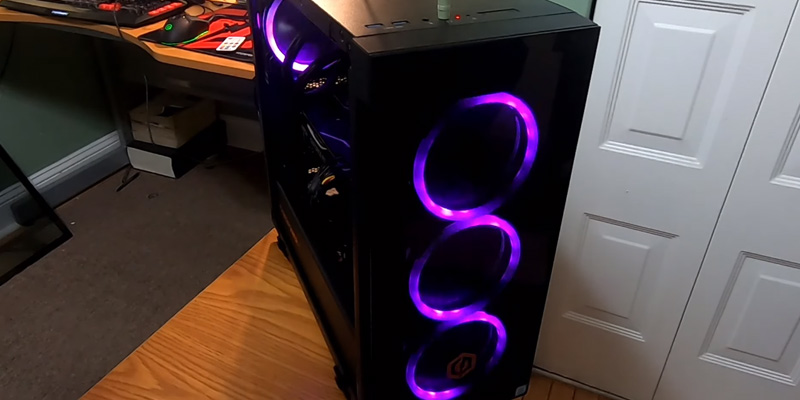
More than Required
From processing 2D and 3D graphics to rendering polygons and mapping textures, modern-day games demand more from GPUs than ever before. GeForce RTX 2070 Super with 8GB RAM meets those demands without breaking a sweat. The RTX 2070S graphics card is easily the best GPU right now from the price-performance ratio perspective, sitting comfortably between mid-range graphics that do not have enough processing power to handle the biggest triple-A titles even at 1080p, let alone 1440p, and high-end GPUs like RTX 2080S and RTX 2080 Ti that give you a relatively marginal boost considering that they cost 50 and 100% more respectively. This GPU will give you somewhere around 100 fps at 1440p even in the most demanding games.
The 1TB SSD and 16GB DDR4 go without saying considering that this is an almost high-end machine but what's more interesting is the 800-watt PSU that will enable SLI setups and the Z390 chipset that will support future upgrades.
Long story short, the CyberpowerPC Supreme will let you play any games now, three years from now, and, with minor upgrades, more than five years from now at the highest video settings with high frame rates.
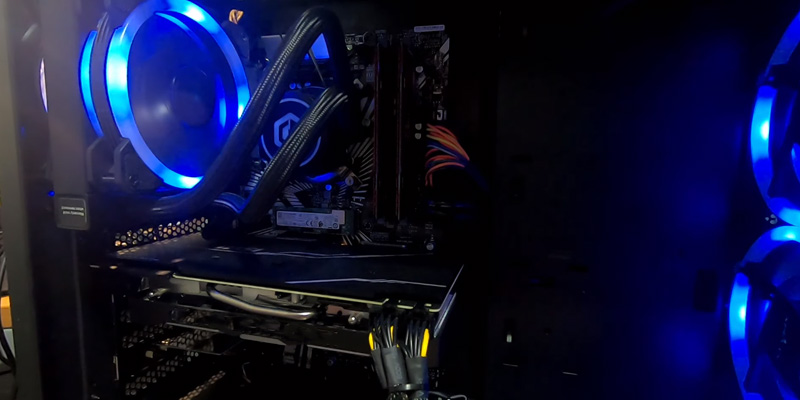
Additional Info
| Last updated price | $2,273.99 |
| Stock | In stock |
| ASIN | B07VFFCQ6L |

SkyTech Siege Mini
Enough to Siege them All
SkyTech Siege Mini understands what gaming is all about and what gaming desktop PCs are supposed to be packing to enable the most ambitious gaming endeavors. See, as much as the processing unit matters, the GPU is easily the biggest driving force behind gaming rigs. You can compromise many things but the graphics card is something that you're not allowed to compromise, not even a little bit.
With that mindset, the people behind this rig decided to go with GeForce RTX 2070 Super and, from where we're standing, the choice was obvious. As good as RTX 2060S and AMD's RX 5700XT are, they cost only 100 bucks less than RTX 2070S and give you around ~20-25 fewer frame rates per second, so settling for them makes very little sense, whereas RTX 2080S costs ~250 bucks more than 2070S and gives you only ~10-15 more fps, so you can see why, as impressive as it is, the RTX 2080S GPU is not that great from the price-performance ratio standpoint.
GeForce RTX 2070 Super is as superb as the name suggests. Even at 1440p, sticking with the highest graphics settings, this GPU makes it possible to run games like Apex Legends, Anthem, Far Cry New Dawn, the latest GoW and CoD installments at somewhere around 100 fps. This is the GPU that will handle any game, even the least optimized ones like Red Dead Redemption 2, Assassin's Creed Odyssey, and Metro Exodus, producing ~60 fps in these travesties. Aside from that, this GPU supports real-time ray tracing, so when the devs behind the biggest games enable those, the GPU will be rendering hyper-realistic reflections, shadows, and lighting effects unlike anything you've seen before. We cannot stress enough how much Nvidia has hit it out of the park with this GPU and why settling for anything less when you have somewhere above $1,200 to spare makes no sense at all.
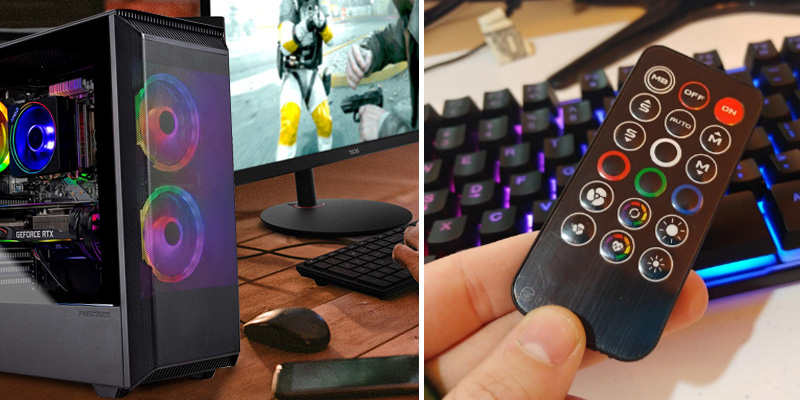
Enough Storage Space Too
AMD Ryzen 7 2700X octa-core CPU with its ability to boost up to 4.3 GHz is precisely what the CPU inside a gaming machine is supposed to be - enough to handle MMOs and sandbox-type games and more than enough to make sure the processing unit is not bottlenecking the graphics card. Besides that, everything else that the build is packing is there to support and sustain these two, including 16GB DDR4 RAM and the 600-watt PSU that will be able to maintain the components inside with ease. What's more, this powerful machine comes fitted with 1TB SSD, which's huge since that means the system and the apps will be loading within seconds yet you'll have enough memory to store as many games as you want.
To put it differently, the SkyTech Siege Mini looks the part (as you can tell from the pictures) and plays the part. Along with the CyberpowerPC Supreme machine that we've reviewed above, what we have here is easily the best gaming rig under $,1500.
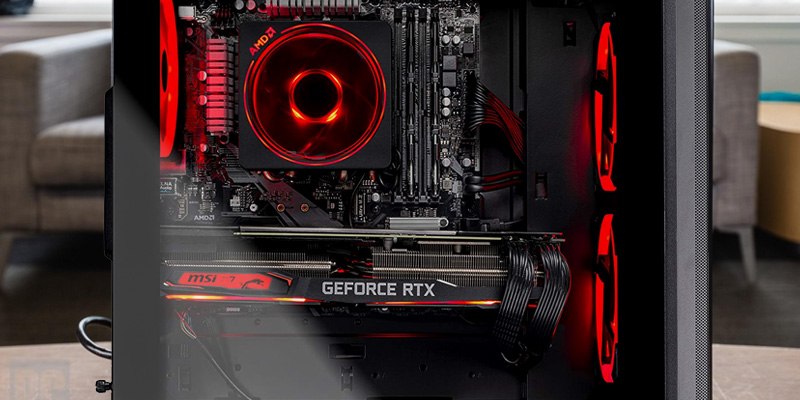
Additional Info
| Last updated price | $0.00 |
| Stock | May be out of stock |
| ASIN | B085X3XTYB |
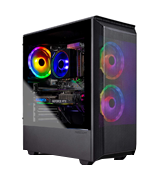
iBUYPOWER Element 9260
From Gaming to Various Computing
The iBUYPOWER Element 9260 is probably up there with the most balanced builds around $1,000. Designed with gaming aspirations first and foremost, this machine is also pretty good at supporting and enabling most tasks. Before anything else, its multitasking prowess comes from the Intel Core i7-9700F octa-core CPU that can reach 4.7 GHz. Add to that the pretty much obligatory at this price bracket 16GB DDR4 RAM and what we have here is the rig that can easily handle juggling multiple system-intensive applications (like video editing) and ensuring the most lag-free multitasking experience. With these two, you can open 20+ Chrome tabs, Discord, Steam, virtually any game, and have the system running without noticeable hiccups.
As much as these components contribute though, they're not as important as the GeForce GTX 1660 Ti graphics card. Now, this is that quintessential mid-range GPU that more than earns its keep, costing less than $300 yet able to produce fantastic frame rates at 1080p and even somewhat respectable fps at 1440p when the game's been optimized unlike the absolute dumpster fires that are Assassin's Creed Odyssey, NBA 2K20, DayZ, Borderlands 3, and Red Dead Redemption 2. As far as most triple-A games are concerned, GTX 1660 Ti is enough to approach 100 fps even at the ultra settings when the resolution is set to 1080p and flirt with 60 fps when you up the ante and switch the resolution to 1440p.
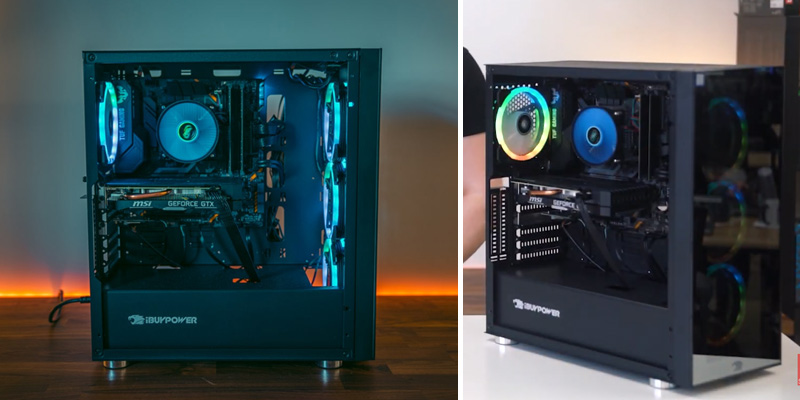
No Unnecessary Junk
Most gaming PCs are usually fitted with unnecessary components that drive the price forward without boosting the machine's performance. This is not the case here. To name one, who needs 1TB SSD? They cost around 150 bucks, which makes very limited sense when you can go with 240GB SSD and 1TB HDD, have more storage space, and save almost 100 bucks. The 240GB SSD will be enough to run the system and to select few games that you play daily, while the HDD can be used to store single-player games that you do not open on a frequent basis.
Besides that, the model's equipped with this 80 Plus Gold 500-watt PSU that's just enough to handle the hardware without upgrading the system. Where the rig somewhat falls down is that the fans are not as quiet as they could have been, considering that iBUYPOWER builds are usually pretty good at that. Even taking that into account though, again, the iBUYPOWER Element 9260 is among the most well-balanced, well-rounded, and flexible systems around 1000 bucks.
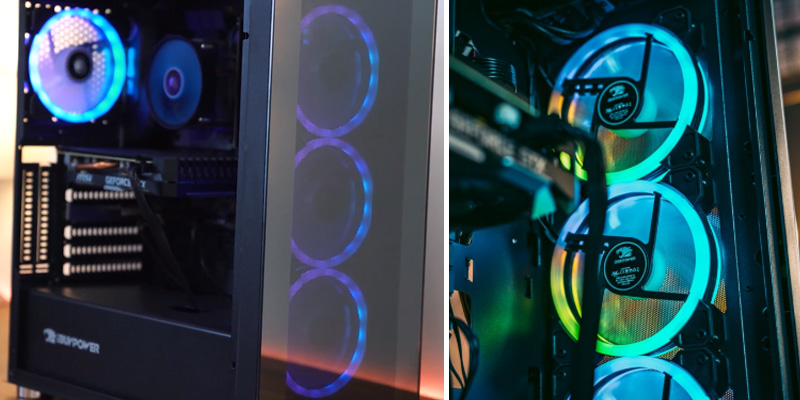
| Last updated price | $1,539.98 |
| Stock | May be out of stock |
| ASIN | B07V34QQ3C |
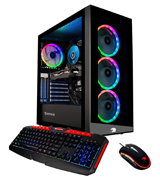
SkyTech Archangel
Not Modest at All
At this price point (~850 bucks), gaming PCs are forced to make sacrifices because less than $1,000 is not enough to pack the components you need to support the most hardware-intensive titles. That being said, there are good and bad ways to go about it and SkyTech Archangel definitely belongs to that "good" crowd. Considering the price, this machine is not as modest as one would expect.
The AMD Ryzen 5 2600 hexa-core CPU is not excellent at multitasking but we're discussing gaming rigs here, so multitasking is not the biggest priority. Its single-threaded performance is great and that's what matters most. You might face some challenges with games riddled with players and abundant NPC like MMOs and RTS games but, aside from them, the processing unit will be able to sustain most games, from MOBAs to shooters and anything in-between. As long as the unit count on the screen is not approaching 100+, the CPU will be fine.
Now, we can extend the same sentiment towards the GeForce GTX 1660 GPU. Is it the best graphics card that money can buy? Not quite. Is it good enough to reach 60 fps when running most modern-day games at 1080p and the highest graphics settings? Indubitably, old chap. From the latest Battlefield and Far Cry installments to anything that's been somewhat optimized, the GPU can produce respectable frame rates and allow you to enjoy these games without stuttering.
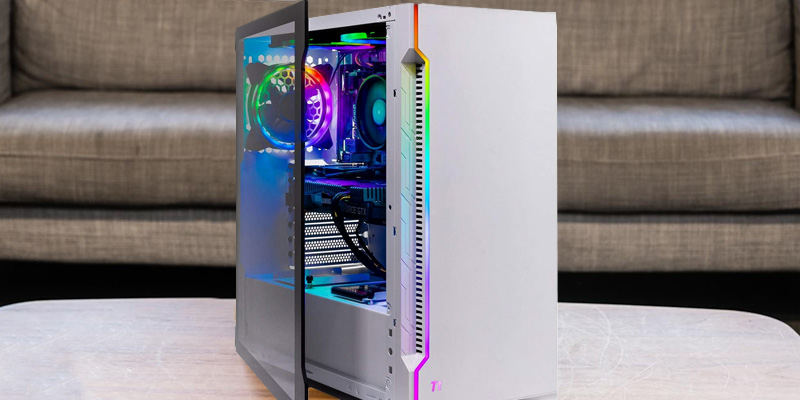
Flashy but not Gaudy
Again, when you go below $1,000, compromises are inevitable. Sacrificing the processing unit and, even worse, the graphics card is no-go, so the people behind this have compromised on storage. What the rig is packing storage-wise is one 500GB SSD, which's awesome except that the system could use an HDD to complement the 500GB SSD since 500 gigabytes is only enough to store 10-15 games these days. You can purchase one separately since these cost around 40 bucks nowadays but we'd recommend looking at the warranty terms and conditions first since some companies do not allow that.
Aside from storage space, we've no problems with this gaming PC. The white case looks good, with the tempered glass side panel displaying ample RGB lightning that's flashy but not too gaudy, sporting this clean, simple, and angular look but with eye-catching vibrance to avoid going from simple to boring.
Bottom line, the SkyTech Archangel is an excellent mid-range gaming rig that allows you to enjoy most modern games without turning the graphics down and without paying through the nose.

Additional Info
| Last updated price | $0.00 |
| Stock | May be out of stock |
| ASIN | B086MJ13VJ |
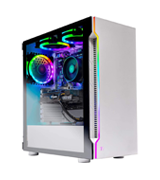
CyberpowerPC Gamer Xtreme VR
Cutting only the Less Important Corners
CyberpowerPC Gamer Xtreme is not that extreme but that's understandable considering that the machine costs ~750 bucks, which technically puts the product between budget and mid-range gaming rigs but without even approaching that mid-range segment. There are GPUs that cost as much as this entire PC and they're not even the most expensive GPUs, so we do not need to mention that this system won't be able to trade blows with the most expensive builds, right?
That being said, the machine does not cut corners as much as you'd expect from the price, primarily because the people behind this rig know what they're doing, compromising anything but the GPU. Adopting GeForce GTX 1660, this system packs enough punch to handle any game at 1080p, even when the graphics settings have been set to ultra. From the latest Assassin's Creed to CoD, GTA, Far Cry, and more, the GPU alone contributes enough to run these titles.
Sure, when you go from 1080 to 1440p, most games will start stuttering around ~40 fps but budget rigs are not designed to handle 1440p, so we're not going to hold that against this setup. We might hold the 8GB DDR4 RAM against the product even though we understand that, when you're forced to cut corners, reducing RAM makes sense since you normally do not need more than 8 to run most games, so you're only sacrificing multitasking, which's not the highest priority when it comes to gaming computers.

Excellent Single-Threaded Performance
The Intel Core i5-9400F hexa-core CPU is great when, again, you take into account that the machine was not built with multitasking ambitions, so its 4.1 GHz single-threaded performance is all you need from the processing unit, even though, with 6 cores, it is not like the machine cannot handle juggling multiple apps too.
From the storage perspective, the model's armed with 240GB SSD and 1 TB HDD, which's smart since gaming rigs are not complete without SSD these days but you do not need more than 240 gigabytes to run the system and some games, allocating the rest to the HDD.
Apart from all that, the case's equipped with a tempered glass side panel that displays rich and dynamic RGB lighting, so the machine looks cool, not unlike its more expensive peers. Plus, aside from the case with all the hardware, the package includes a gaming keyboard and mouse, which's nice since, once more, the price is pretty modest here.
To bring this home, CyberpowerPC Gamer Xtreme is what beginners with limited budgets will appreciate more than anything else, bringing aesthetics and relatively high performance to the table.
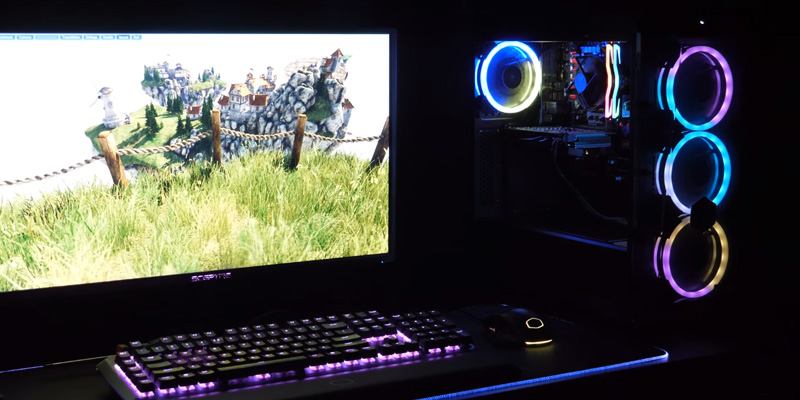
Additional Info
| Last updated price | $1,256.00 |
| Stock | In stock |
| ASIN | B07VGJDKZ4 |
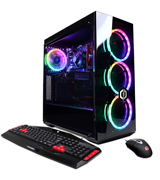
What Is a Gaming PC?
For many people, playing computer games is their favorite way of relaxation. However, the capabilities of conventional computers may not suffice for wholly enjoying the modern games, as one needs a specialized powerful gaming personal computer. The main distinguishing feature of these gaming PCs is their higher performance comparing with conventional computers. Moreover, often the gaming PCs are not only distinct in their performance, but in their innovativeness as well. Whether it be the appearance of a PC or its components, everything is aimed at provision of the comfort, production of appearance and design, and performance maintenance. All these factors serve the purpose of offering the maximum immersion of the user into the world of computer games.
For the fans of mobile gaming, our gaming laptops review will surely be of much interest.
What Features to Compare
Performance
The first thing you should pay attention to when choosing the equipment of this type is the general and gaming performance. It is the foremost parameter that distinguishes the gaming PCs: its video card or video adapter. Gaming performance-wise, the video card in most cases is of the greatest importance for a gaming PC. Video card performance parameters are somewhat aggregate of CPU and RAM parameters as video cards have their specialized processors called GPUs, which also have their clocking frequencies (the higher the GPU’s clocking frequency the higher the GPU performance, within one GPU generation), number of computational blocks (these blocks are smaller and more numerous than the CPU cores, but the same logic of more GPU blocks for higher performance applies) and the amount of video memory or video RAM, which is also measured in gigabytes (1, 2, 4 Gb – the more the better). There are video cards of different generations or architecture and the more recent the architecture is the more capable the GPU is performance-wise and features-wise.
CPU
The second factor affecting the general and gaming performance is the CPU (central processing unit) or simply the processor as all the software is processed by this unit: it feeds the other main PC components the data for further processing and maintains the operation of all the peripherals. With that, the more capable the processor is, the higher the PC performance will be. Processor key performance parameters are its clock frequency, which is usually measured in gigahertz (for example, 3, 3.5 GHz, the higher the better if comparing the CPUs of one architecture or one generation), and the number of processing cores, which in most cases is divisible by two (2, 4, 8 cores, the more cores there are, the higher the overall performance is).
RAM Memory
Last but not the least PC component, which determines a PC general and gaming performance is the amount of random access memory (RAM) installed in the system. It is measured in gigabytes (Gb) and in most cases is divisible by two (2, 4, 6, 8 Gb or more), though there are some PC configurations that have the odd number of RAM amount (1, 3 Gb, etc.). The RAM performance is also influenced by its type or generation (DDR, DDR 2, DDR 3) and operating frequency measured in megahertz (1866, 2000, 2133, 2400 MHz or higher). The higher the frequency the higher the RAM performance if to compare the RAM of one type or generation, e.g. DDR 3 RAM. The performance comparison of different types of RAM, e.g. DDR 2 and DDR 3 based solely on their frequency is incorrect though as these types of RAM have different data bandwidth\data processing capability per 1 MHz of frequency. However, considering the certain trend for the unification of the components used in the industry at the moment, when comparing different computer for gaming models we are most likely to deal with the same and most recent type of RAM. If to bear in view the comparatively insignificant (and diminishing with the frequency growth) influence of RAM operating frequency on the system performance, we conclude that the bigger the amount of RAM installed the better the PC General and Gaming performance and multitasking capabilities.
Features
After defining the General and Gaming performance factors, we should focus on distinguishing features of a gaming computer. Thus, gaming PCs combine not only powerful standardized components but peculiar and unique solutions by a vendor. Each of the models included in our gaming PC review is a unique solution from the point of view of ergonomics, functionality and communication with external devices. Distinguishing features, for example, can consist in the availability of special ergonomic solutions, proprietary technologies and functionality, branded components. With that, these peculiar gaming PC features serve for offering maximum gaming experience and gaming interaction.
Form Factor and Cooling
Eventually, after dealing with the inner components and features in our gaming computer review, it is necessary to delineate the Form Factor and Cooling. Form factor usually refers to desktop gaming PC’s system unit or computer case and determines its dimensions and inner parts arrangement (which affects such important feature as computer case cooling needed for continuous operation at high loads). The most commonly used computer case form factors are (from the largest to the smallest) Full Tower, Mid Tower, Mini Tower. Form Factor and Cooling determines the gaming PC expandability or the capability of its basic hardware to be upgraded or its features to be expanded by the addition of various equipment. That being said there are so-called all in one gaming PC models, which have a very tight integration of desktop gaming PC main component, computer case, with such important input/output devices as display, keyboard and PC mouse.
Gaming Demographic
It's Not All Dudes
Most people associate gaming as a hobby with the male population. And, sure, guys are still the majority of the general player base. But they aren't as large of a majority as one might think. According to the Entertainment Software Association, the gaming community is about 45% female across all platforms.
Now, more girls playing video games is a good thing no matter how you slice it. That said, people do tend to misinterpret these numbers. For one, just because about as many women play video games as men doesn't mean that every game's player base would be spread in a similar manner.
One thing to keep in mind is that, though over 45% of women play video games on a semi-consistent basis, only about 6% identify themselves as gamers. With men, that number is closer to 15. And the difference becomes even more evident if you only consider the primary gaming demographic, which are the people between the ages of 18 and 35. Only about 9% of women that age would call themselves gamers. On the other hand, a third of men in that age group, no less than 33 percent, consider themselves gamers.
Women spend about as much time on video games as men do. It's just that they prefer different genres. For instance, puzzle games, family, and farming simulators are dominated by women. The guys barely add up to 30% of the player base in these genres. Sports simulators and shooters, on the other hand, are played almost exclusively by men. The former genre features a 98% male population, while different types of shooters generally have less than 6-7% women as their active player base.
It Isn't Just the Young'uns Either
We're all familiar with the angry teenage boy stereotype, sort of a broad brush that people tend to paint the entire gaming community with. But, again, it is far less accurate than most people think. Sure, teenagers, and boys in particular, love video games. But you know who else loves them? Everybody else, that's who.
Less than 30% of gamers are under 18 years old. Now, we've said earlier that the people between 18 and 35 years old are the primary gaming demographic. But that isn't entirely true either. Sure, these people represent a large chunk of the gaming community. But they only add up to about 32% of gamers. The biggest gamers, as it turns out, are actually people above the age of 35. They represent almost 40% of the gaming crowd.
The Average Gamer
So, with all of these statistics in mind, who exactly is the average gamer? Well, the most frequent game buyer is 37 years old. But the average gamer is actually closer to 35. That person has been playing video games for about a decade and a half. Nevertheless, he probably doesn't play quite as often as only about 42% of Americans play video games on a regular basis (more than 3 hours per week). He or she is a lot less antisocial than you would think. About 56% of gamers prefer playing with other people. That person is not an anomaly either. 51% of American households include at least 1 console.
So, considering these stats, is it really that much of a shocker that the international video game revenue adds up to over $138 billion? And don't even get us started on the Esports industry as it is a whole different topic for another time.
How to:
Sources:
1. Matt Smith What Matters (and What Doesn't) When Buying a Gaming Desktop, DIGITAL TRENDS. July 27, 2015.
2. Loyd Case Top Ten Factors for Choosing a Gaming PC, PCWorld. July 1, 2012.
3. Joel Santo Domingo How to Buy a Desktop or Laptop for Gaming, PCMag. October 23, 2014.
4. PC Gamer Buying Guides, PC Gamer. April 8, 2016.
5. How to Build a "Cheap" Gaming Computer, Instructables.
6. Mark Knapp 9 Key Things to Know Before You Buy a New Computer, CheatSheet. April 26, 2016.
7. Gaming computer, Wikipedia.


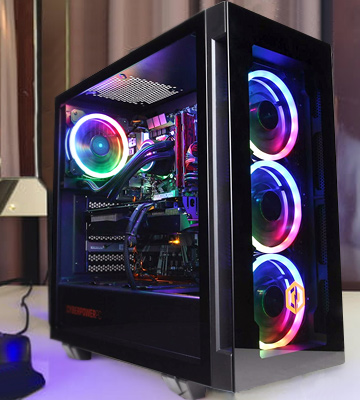
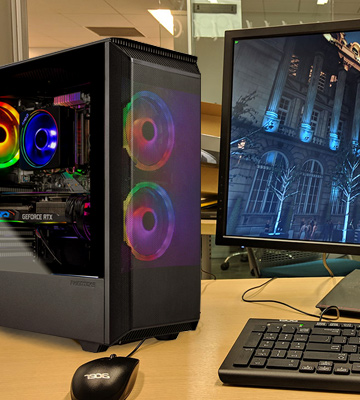
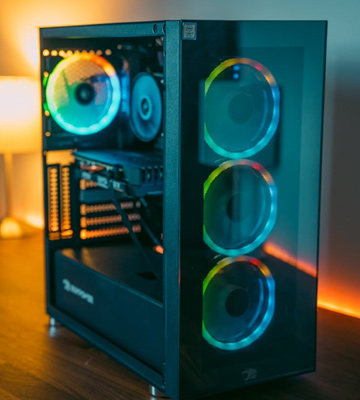

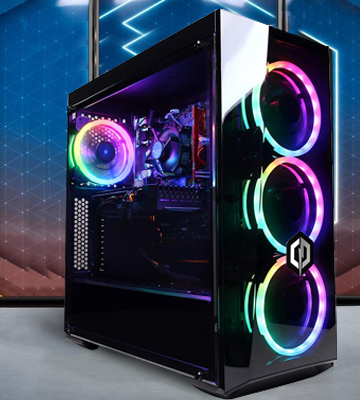

Your comment was successfully sent
Error! Please try again later